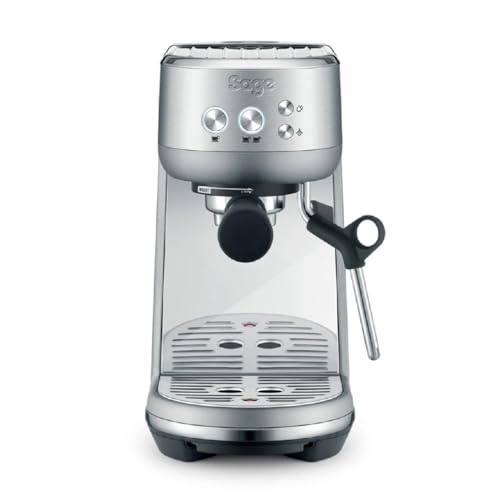Coffee and Espresso Machines
Espresso machines make use of pressure in order to force water into finely ground and tamped beans. They create a rich, tasty brew.
Experts at the Good Housekeeping Institute recommend models that brew at the minimum pressure of 9 bars in order to get the best extraction. Beware of manufacturers that claim to use higher pressure than necessary.
Types
The espresso maker, also called a coffee or espresso maker, produces the highest-quality, concentrated coffee that you enjoy in your favorite cafe drinks with an average of 9 bars of pressure. These machines are equipped with many features, such as temperature and brew-strength control, programmable brewing and various sizes of drinks. They can also have steam wands for manual or automatic use to create texturized milk for latte art. There are three kinds of latte art that are semi-automatic; super-automatic; and automated. Each espresso machine has its own specific level and type of automation.
The most popular espresso machine for specialty coffee shops is the semi-automatic model. This allows baristas to have complete control over the brewing process but it is not as user-friendly as a fully automated machine. To get the most perfect espresso shot, you must grind the beans, fill the portafilter, tamp it down, and alter the extraction time.
Automated machines come with an integrated grinder, and they measure and mill the grounds for you. They automatically dispense enough water to make espresso, and are often equipped with an adjustable size for drinks. They were the most frequent espresso machine in our lab tests, and they provide a great balance of consistency and human control.
Functions
You'll need a reservoir hold the water that you use to make coffee, whether you select a steam-driven or pump-driven machine. You'll also have an element to heat up the cold water to create the high pressure needed to extract coffee from ground.
When the brew lever is raised it triggers the water inlet cam to seal the valve for pre-infusion, so only hot water that has been pressurized to the maximum pressure can flow through the portafilter into ground coffee. It takes around 25 seconds for the water to become espresso.
The hot-water tubing also referred to as the insulated tube, is a tube that runs from the reservoir to the spout located at the top of your machine. The heating element of resistance warms the water as water passes through the aluminum tube and warming plate.
When the spout is switched on, you'll need to place your cup in the spout in order to capture the espresso as it is pushed through the portafilter into your cup. The coffee maker also have a steam wand which you can use to heat and froth the milk for drinks made with espresso, like cappuccino or lattes.
Automatic machines eliminate the guesswork out of making coffee. They are easy to use, programable, and can measure and grind beans and to tamp down. In our Lab tests, they tend to perform best due to their being simple to use and don't require a lot of user skills.
Materials
The inside of an espresso machine is a forest of copper tubes boilers made of stainless steel, as well as sophisticated firmware. espresso machine uk Coffeee UK might appear complicated, but at their core they do one simple thing: force hot water through finely ground coffee.
When looking for an espresso maker, think about the size and space requirements, beverage options, energy-saving alternatives, and brewing accuracy. Also, look for a steam knob that will activate the steam wand that can be used to froth milk and creating artwork with latte. The front of the machine has a gauge for pressure that can tell you the operating pressure for the boiler and pump. You should choose an espresso machine with two needles in order to determine the pressures at the lowest and highest.

If you're looking to make more than espresso, select one that comes with different brew sizes, including ristretto. There are models that have the option of a frothing hopper with a removable hopper that allows hands-free, easy frothing. You can also switch between various kinds of milk easily. Make sure you choose a model with an integrated softener if you have hard water to prevent mineral accumulation and ensure fresh espresso.
Certain manufacturers employ a thermostat that is digital, integral and proportional to maintain a certain temperature range when making espresso. This makes sure you get a high-quality espresso cup every time. It also saves on energy costs since the machine only runs when it's required.
Maintenance
Since espresso and coffee machines become more accessible to home use, the regular maintenance of the equipment becomes even more crucial. Having the best equipment can make a world of difference in the taste of your coffee, but this is only true if the machine is functioning properly.
A regular cleaning and maintenance routine should include everything from cleaning the steam wand and group head to decaling, and finally changing the water filter frequently. As a general rule for making between two and five cups of coffee every day, you should clean most parts of the machine once a week. However, some parts of the machine, such as the water tank and grinder, will need to be cleaned every two or three weeks.
In addition, you should backflush your system on a weekly basis. This involves locking the portafilter in place and running the brew cycles multiple times. This will help remove any coffee grounds or oils that have been left behind. You can also use a brush and cleaner specifically designed for espresso machines to clean the portafilter.
Maintaining your coffee and espresso machine in a proper manner can ensure that it lasts longer. It is essential to maintain your expensive professional espresso machine.
